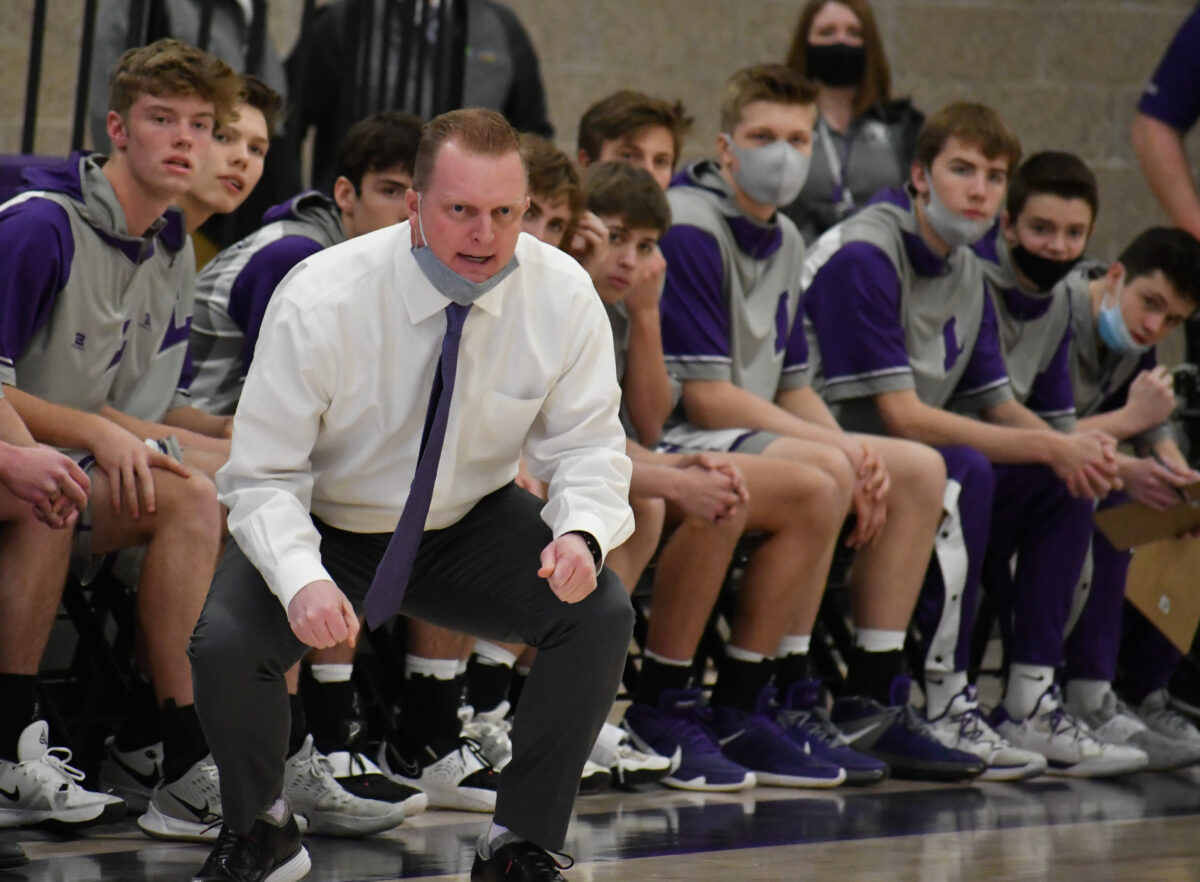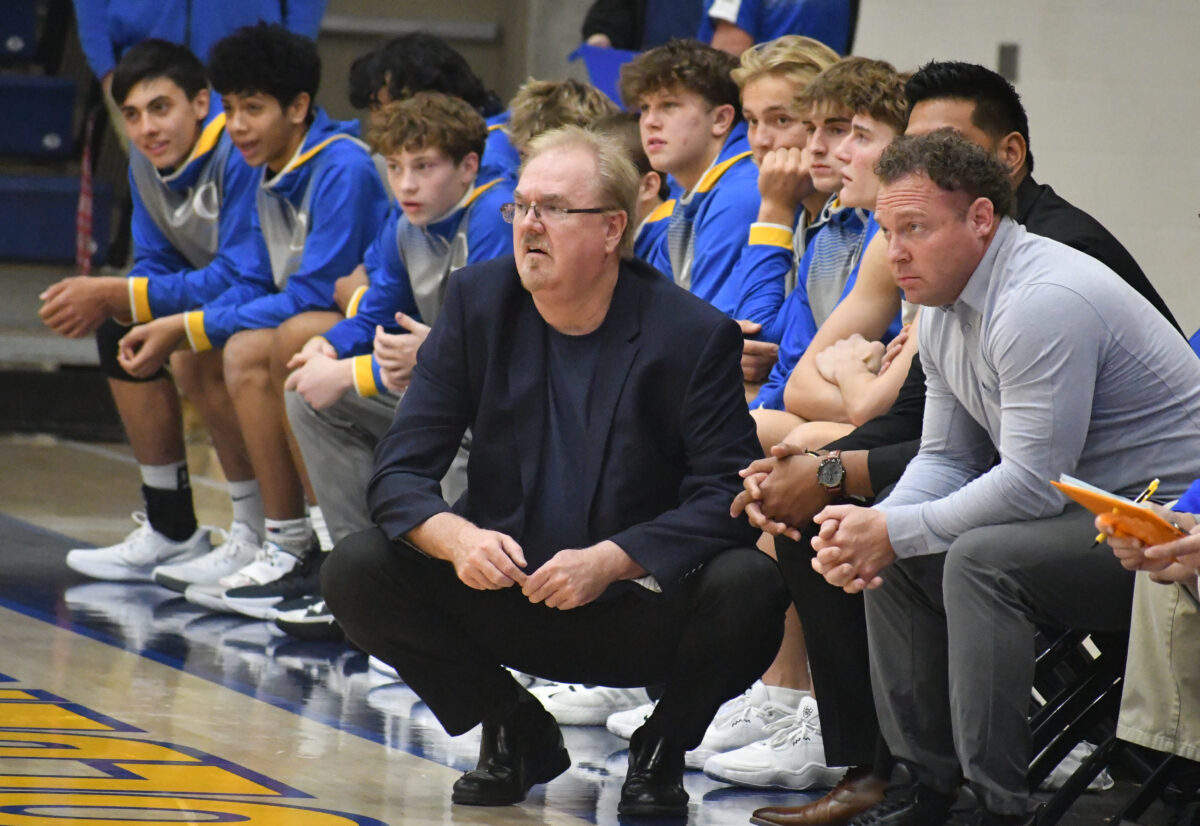UHSAA adopts shot clock for 2022-23 high school hoops season
-
Lehi head coach Quincy Lewis watches his team in action during the 5A quarterfinal game against Bonneville in Lehi on Wednesday, March 3, 2021.
-
Springville head coach Holli Averett directs her team during the 5A semifinal game against Lehi at Salt Lake Community College in Taylorsville on Friday, March 5, 2021.
- Orem head coach Perry Wildeboer (center) watches the action during the game against Provo in Orem on Friday, Dec. 10, 2021. (Jared Lloyd, Daily Herald)
The days of high school boys and girls basketball teams in Utah being able to hold the ball as long as they want are numbered.
The UHSAA Board-of-Trustees voted Thursday to add a 35-second shot clock for varsity high school basketball games for all classifications in boys and girls basketball, beginning in the 2022-23 season, according to a release from the Utah High School Activities Association.
The release said that the “rules regarding the length of the clock, the placement of the clock, and other logistical matters will follow the guidelines set by the NFHS Basketball Rules Committee, which voted in the spring of 2021 to make shot clock usage available for State Association adoption beginning next season.”
The initial reaction from some Utah Valley high school basketball coaches was positive.
“I like it,” said Orem head coach Perry Wildeboer, whose Tigers are one of the top teams in 5A this year. “I welcome it. I think it’s good. It brings a little more excitement to it, a little more strategy. It will make people think about playing faster.”
Lehi head coach Quincy Lewis said this change has been a long time in coming.
“This is something that’s at least 15 years in the making,” Lewis said. “When I was the president of the Coach’s Association I think it was 2007, we actually voted on it at our annual meetings in the fall. It was overwhelming that people wanted it at that time. But the two biggest issues were the cost for everybody and also that we had to be on the same page as the NFHS (National Federation of State High School Associations). Even though people wanted it, there were two components that had to be solved first.”
Springville head coach Holli Averett said her first thoughts were about trying to take advantage of the new possibilities.
“I think it’s kind of exciting as a coach because it just changes the game strategically a little bit,” Averett said. “Maybe you’re going to press to get them to use some extra time. It’s going to be more fun to game plan for that.”
Wildeboer and Lewis agree that they don’t think it will actually change the boys game all that much.
“It’s not going to change things as much as people might think,” Lewis said. “Most teams are not going to take 35 seconds in a possession to try and score. Occasionally they will, but not that often.”
Lewis was the head coach at Lone Peak in 2013 when his phenomenally talented Knights played in one of the more high-profile stall games in the last decade or two. In the semifinals, Brighton tried to stay close by holding the ball for minutes at a time and although it prevented Lone Peak from getting up as big, the Knights still won.
The option to just hold the ball like that will become a thing of the past with the shot-clock implementation but Wildeboer said he doesn’t currently see that happen.
“We’re not really in an era where teams just hold the ball like you might have seen 20 years ago,” Wildeboer said. “You just don’t have that element. I think having 35 seconds is pretty reasonable for most teams.”
The biggest impact will probably be at the end of games.
In years past, when the game was tied, teams would frequently hold the ball sometimes as long as two or three minutes in an attempt to ensure they got the last shot.
“Right now, if there’s one minute left and you’re tied, you’re nuts if you don’t take the last shot, right?” Wildeboer said. “You hold the ball because then you can’t lose. I would always play the percentages. But if you have a shot clock and there’s a minute left, then you have to think about shooting early enough so they have to shoot too. Maybe we still get two-for-one. That’s a huge difference in strategy.”
The coaches did say that they think it will take the players a little bit of time to get used to the additional element.
“I’ve noticed, even with my teams, the players don’t always know the situation of the game,” Averett said. “Sometimes they’re not even aware of the time. They are going to have to be more aware on every possession. I think it’ll open up some one-on-one opportunities when there’s like five seconds left. Teams might have to scramble.”
The bottom line, according to Lewis, is that the shot clock will provide a positive result for good play at both ends of the court.
“What it does is it rewards good defense and it rewards good offense,” Lewis said. “If you defend for 35 seconds, you deserve to get the ball. Offensively, if you don’t execute well enough to score within 35 seconds, you don’t deserve to score, in my opinion. I just think this is a positive move all the way around by the way UHSAA to improve our game.”









